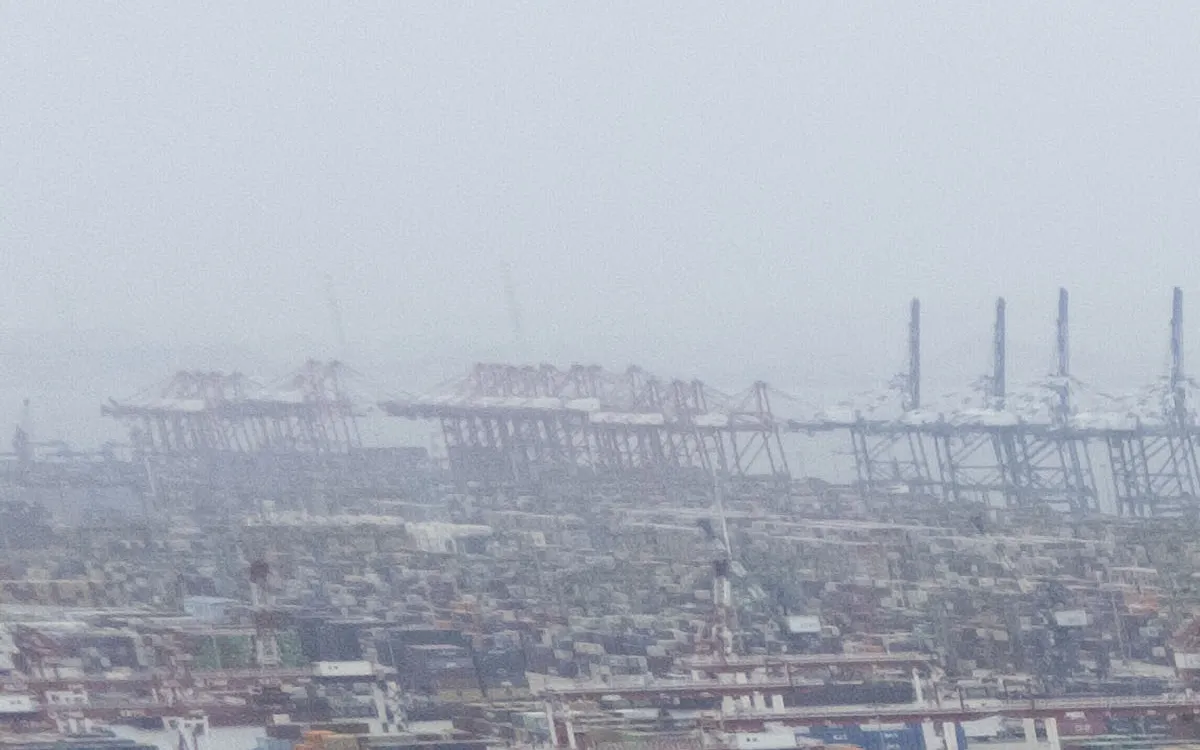
On Thursday, Sen. Kevin Cramer (R-N.D.) expressed his apprehension regarding the delicate balance the Republican Party is trying to maintain concerning tariffs. He remarked, “I worry, probably as much as anything, that there could be some temporary inflation and that could have a lot of consequences. Hopefully not, but if so, play the long game.” This statement highlights the potential economic repercussions that tariffs may bring, especially in terms of inflationary pressures.
The White House argues that the recent decision to impose tariffs on low-value packages originating from China aims to combat the smuggling of fentanyl. Officials point out that drug cartels have exploited the current lack of customs inspections, making China a significant source of this illicit drug. White House spokesman Kush Desai stated, “Tens of thousands of Americans are paying with their lives every year for the fentanyl and other illicit drugs that are being smuggled over our borders and through everyday packages.” He emphasized that the Trump administration is committed to utilizing every executive power to safeguard American lives and create a fair environment for U.S. workers and industries.
However, the Trump administration is aware of the political risks associated with these tariffs. On Tuesday, Trump reached out to Amazon CEO Jeff Bezos following a report suggesting that Amazon would highlight the added costs of tariffs on its products. White House press secretary Karoline Leavitt criticized this move as a “hostile and political act by Amazon.” In response, Amazon clarified that it was merely “considering the idea” for a limited segment of its products.
As the tariff situation evolves, other online retailers are also adapting. Fast-fashion brands like Shein and Temu, which frequently ship Chinese-made products directly to consumers, have begun raising prices and citing U.S. tariffs as the reason. Temu has started displaying “import charges” that significantly increase the cost of items from China, while promoting “local” products that escape these tariffs. Additionally, Etsy, a platform connecting customers with craft makers, is encouraging its users to purchase domestically to avoid Chinese imports.
The wedding planning platform The Knot has also taken action by removing certain Chinese-made products from its shop, citing the new tariffs as a reason for this decision. In a communication to customers, The Knot stated, “New U.S. tariffs will prevent us from shipping China-made products to U.S. addresses after April 24.” This shift underscores the far-reaching implications of tariffs across various retail sectors.
To facilitate transparency in costs, UPS has introduced a service allowing customers to view the total expense of their purchases, including tariffs, before checkout. “We have a flexible global network that is well-positioned to help our customers navigate shifts in global trade,” remarked Natasha Amadi, a UPS spokesperson. This move is crucial as carriers like UPS, FedEx, and the U.S. Postal Service will be responsible for collecting tariff payments on incoming packages from China and Hong Kong.
Packages shipped via UPS and FedEx will incur a steep 145 percent tariff, while postal service recipients can choose to pay either 120 percent of the product’s value or a flat fee of $100, which will increase to $200 after June 2. This cost burden will fall on consumers unless the seller opts to cover the tariff upfront. Depending on the seller's choice, buyers may need to pay online, upon delivery, or at shipping centers.
To assist its sellers, Etsy has published a guide addressing how to manage tariffs, recommending sellers adjust their pricing to account for potential tariffs. The guide encourages transparency with buyers regarding any possible tariff implications on sales. “Consider adding messaging to your shop announcement or in your listing descriptions, or communicating directly with your buyers,” it advises.
The complications arising from tariffs highlight the rationale behind the creation of the “de minimis” exemption for low-value packages nearly a century ago. This exemption was based on the belief that the cost and effort of screening small packages were not warranted. However, recent developments have forced the Trump administration to pause its initial plan to eliminate this exemption due to the backlog of packages as Customs and Border Protection (CBP) worked on a new screening system.
Trump has requested the Department of Commerce to devise a system for processing low-value packages from China, with expectations that it will be operational by May. A CBP spokesperson acknowledged the significant challenge ahead, stating, “U.S. Customs and Border Protection (CBP) certainly has a huge task on its hand.” They are poised to implement and enforce the President’s tariffs utilizing their enforcement and revenue collection authority.
Chinese retailers have notably leveraged the tariff exemption in recent years, with the U.S. importing a staggering $66 billion in low-value packages in 2023, a drastic increase from $5.3 billion in 2018. A significant portion of these packages originated from China, accounting for 67.4 percent of de minimis shipments into the U.S. between 2018 and 2021. This trend has been particularly popular among Gen Z consumers who favor affordable clothing from brands like Shein.
As retailers begin to process the implications of these tariffs, trade and economic analysts predict that price increases and shortages could arise by mid-to-late May. Treasury Secretary Scott Bessent has indicated that the current tariff levels on Chinese goods amount to an effective “embargo,” making these products prohibitively expensive. Scott Lincicome, director of general economics at the Cato Institute, warns, “You’re going to see some small businesses fail,” as smaller enterprises lack the inventory buffering capabilities that larger companies possess.
In conclusion, the evolving landscape of tariffs, particularly the new regulations affecting low-value packages from China, presents complex challenges for consumers, retailers, and the overall economy. As stakeholders navigate these changes, the long-term implications for small businesses and pricing strategies remain to be fully realized.